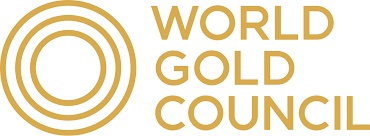India’s gold market is experiencing a complex period of contrasting trends, with international gold prices hitting new highs in June while domestic jewelry sales remain subdued. Despite this, physical gold investment and gold-linked lending are demonstrating remarkable resilience, according to Kavita Chacko, Research Head for India at the World Gold Council.
Gold has underscored its traditional role as a safe-haven asset, surging over 30 percent year-to-date. This impressive performance, following a brief pause in May, is largely attributed to escalating geopolitical tensions stemming from the Israel-Iran conflict and a resurgence in Exchange Traded Fund (ETF) demand. As of June 13, international gold prices reached an unprecedented US$3,435 per ounce, with domestic prices mirroring this ascent at INR98,732 per 10 grams.
Jewelry Demand Softens, Investment Shines Amidst Discounted Prices
While the wedding season typically drives a significant portion of gold purchases in India, jewelry sales have been “underwhelming” since April and May. Even a softening of prices in May, which led to increased footfall in stores, failed to translate into substantial demand, with purchases largely confined to essential needs. This muted interest has resulted in domestic gold prices trading at a notable discount to international benchmarks, widening from an average of US$12 per ounce in mid-March to over US$38 per ounce by June 13.
In stark contrast, physical investment demand for gold bars and coins, which constitutes nearly 30 percent of consumer demand, has remained robust. This sustained interest is fueled by positive price momentum and expectations of further appreciation, with a discernible preference for lower-grammage coins (under 10 grams).
Gold-Linked Lending Surges, ETFs Rebound
A significant and growing trend in the Indian gold market is the increasing monetization of existing gold jewelry holdings. Consumers are actively exchanging old pieces for new, liquidating them, or leveraging them as collateral for loans. This trend is poised for acceleration following the Reserve Bank of India’s (RBI) recent relaxation of norms for loans against gold jewelry. Already, lending by commercial banks in this segment has witnessed an astounding nearly 120 percent year-on-year surge, reaching INR2,230 billion (US$26 billion) by the end of April. Several retail Non-Banking Financial Companies (NBFCs) are expanding their gold loan portfolios, anticipating strong growth and lower credit costs.
Indian gold ETFs have also experienced a turnaround in May, breaking a two-month streak of outflows with modest net inflows of INR2.9 billion (US$34 million). This renewed investor interest is likely driven by persistent safe-haven demand amidst global geopolitical turmoil, a trend that preliminary data suggests continued into the first half of June. Total assets under management (AUM) for gold ETFs have nearly doubled, surging by 97 percent year-on-year to INR624 billion (US$7.3 billion), with total gold holdings inching up to 64.65 tons. Investor participation is also broadening, with 0.22 million new accounts added in May, bringing the total to 7.3 million.
RBI Pauses Gold Purchases, Imports Moderate
The Reserve Bank of India has maintained a pause on gold buying since March, acquiring only 3.4 tons so far this year, a significant reduction compared to the 30.6 tons purchased during the same period last year. This pause is likely linked to the sharp rise in gold prices. Nevertheless, India’s gold reserves have climbed to a record 879.6 tons, now constituting an all-time high of 12.3 percent of total foreign exchange reserves, up from 8.7 percent a year ago, underscoring its growing strategic importance in the RBI’s reserve mix.
Meanwhile, gold imports have moderated for the second consecutive month in May, declining 13 percent year-on-year to US$2.5 billion. This aligns with the softer domestic demand environment, with estimated import volumes ranging from 27 to 32 tons, down from 41 tons in May 2024.
Outlook: Awaiting Festive Revival and Long-Term Projections
The June-July period typically marks the off-season for gold in India, particularly for jewelry. However, a recovery in demand is anticipated with the onset of the festive and auspicious buying season from mid-August. Investment demand for physical gold and gold-linked financial products is expected to remain resilient, supported by sustained investor interest.
A new report from UBS projects a continued rally in gold prices, forecasting a rise to US$3,500 by 2026. This surge is attributed to escalating tariff uncertainty, weak economic growth, high inflation, and persistent geopolitical risks, making a compelling case for gold as an investment.
For India, a significant importer of gold, higher global gold prices are expected to keep net gold imports elevated at US$55-60 billion (1.2 percent of GDP) in FY26/27E, even with an anticipated softer volume demand. Despite this, UBS expects India’s current account deficit to remain manageable, bolstered by post-pandemic buffers like a services trade surplus and remittance flows.
Indian households, with their deep cultural affinity for gold, hold the world’s largest gold stock, estimated at 25,000 tons by the World Gold Council. This vast reserve represents 14 percent of the global gold stock and is valued at approximately US$2.4 trillion, equivalent to 56 percent of India’s FY26 nominal GDP. The consistent rise in domestic gold prices, which have doubled since FY20, has significantly increased the imputed wealth of Indian households based on their gold holdings.
Despite record high prices in FY25, India’s consumer gold demand (jewelry and retail investment) reached 782 tons, approximately 15 percent above the pre-pandemic average. A sharp reduction in gold customs duty by the government from 15 percent to 6 percent in July 2024 also contributed to this demand. While jewelry demand softened, retail investment demand for gold bars and coins remained robust, increasing by 25 percent year-on-year in FY25.
Looking ahead, UBS estimates India’s gold demand to moderate to around 725 tons in FY26 (-7 percent YoY). However, demand is anticipated to recover to 800 tons in FY27E, supported by stabilized household consumption and a projected US$55 billion pay boost from the Eighth Pay Commission, which is expected to benefit millions of government employees and pensioners.
Mobilizing Gold Stocks and Policy Efforts
Efforts by the Indian government to divert household gold savings into more productive uses and curtail imports have seen limited success. While households are increasingly using gold as collateral for loans, the collateralized gold lending market remains small, representing less than 2 percent of the outstanding gold stock.
Government initiatives like the Gold Monetization Scheme (GMS) and the Sovereign Gold Bond (SGB) Scheme have had mixed results. The GMS, launched in 2015 to monetize idle gold, achieved limited success due to a lack of awareness and cultural barriers. The SGBs, aimed at reducing physical gold demand, were discontinued in February 2024 due to rising gold prices and increasing government obligations. Conversely, Gold Exchange Traded Funds (ETFs), introduced in 2007, have recently gained prominence with rising gold prices.






